What did the early church believe about creation? In its first 16 centuries the church held to a young earth. Earth was several thousand years old, was created quickly in six 24-hour days, and was later submerged under a worldwide flood.
A Young Earth According to . . .
The Church Fathers
The Church Fathers (AD 100–600) were theologians after the apostles. Based on Scripture, they opposed naturalistic theories of origins. Some, including Clement of Alexandria (c. 152–217), Origen (c. 185–254), and Augustine (c. 354–430), interpreted Genesis 1 allegorically. To them, the six days were a symbolic presentation of God’s creation in one instant.
Progressive creationists, such as Hugh Ross in the book The Genesis Debate: Three Views on the Days of Creation, claim Augustine as a precedent for interpreting the Bible’s reference to “six days” as a symbol for eons of creative activity (known as the framework hypothesis).1 But it is unfair for progressive creationists to make their case using Augustine. Augustine believed the earth was created instantaneously, not progressively, and was, according to Scripture, less than 6,000 years old.
Most of the Church Fathers interpreted Genesis 1 in a plain and straightforward way, as actual history. The six days were 24-hour days. Ephraim (Ephrem) the Syrian (306–373) and Basil of Caesarea (329–379) argued for the literal sense of Scripture against the distortions of allegory. Basil said twenty-four hours fill up the space of one day. Even Ambrose of Milan (330–397), mentor of Augustine, believed each day consisted of twenty-four hours, including both day and night. In addition to this, the Fathers believed that the earth was less than 6,000 years old.
Medieval Theologians
Medieval (AD 600–1517) theologians, until later years, followed Augustine. They viewed creation as instantaneous, and the six days as a literary framework. An example is Anselm of Canterbury (c. 1033–1109).
Bede (c. 673–735) moderated Augustine’s view. He believed creation had occurred instantaneously but was formed over six 24-hour days. Others, such as Andrew of St. Victor (c. 1110–1175), rejected Augustine’s view and interpreted Genesis 1 literally.
The medieval church continued to believe that creation was sudden, not gradual, and occurred fewer than 6,000 years in the past. As interpreters began returning to a literal reading of Scripture, they began restoring the literal view of the days of creation.
Reformation Leaders
The Reformation leaders (AD 1517–1700) believed the Bible is the final authority (sola scriptura). The Reformers rejected allegorization and returned toward a literal, grammatical-historical interpretation. Martin Luther (1483–1546) and John Calvin (1509–1564) argued that the earth was created in six 24-hour days, fewer than 6,000 years in the past.
Luther said, “We know from Moses that the world was not in existence before 6,000 years ago.” He also rejected Augustine’s view and said that “Evening and morning became one day” meant that Moses was “speaking of the natural day, which consists of twenty-four hours.”
Calvin believed that God’s creation was completed not in a moment but in six days. He concluded, based on Genesis 1:5, that God Himself took six days to accommodate His works to the capacity of men. Creation occurred little more than five thousand years in the past, not innumerable ages.
The Westminster Confession (1647) clearly affirmed that God created the world and all things in it “in the space of six days” (chapter 4, paragraph 1). “In the space of six days” was based on Calvin’s Genesis 1:5 comment. In Annotations upon All the Books of the Old and New Testament (the Westminster Annotations, 1645), the Westminster authors specified concerning Genesis 1:5 that in the latter part of the verse, the word day is the natural day, consisting of twenty-four hours. This Presbyterian Confession, with its traditional view of creation, was also adopted by British and American Congregational and Baptist denominations.
A Global Flood According to . . .
The Church Fathers
The Fathers believed that the Flood submerged the entire earth. For example, Justin Martyr (c. 100/110–159/165) and Augustine said that the Flood rose 15 cubits above the highest mountains. Theophilus of Antioch (c. 115–168, 181) argued, against Greek local flood theories, that the water overtopped every high hill by at least 15 cubits.
Medieval and Reformation Leaders
The belief that the Flood was worldwide continued in the medieval era. Its chief theologian, Thomas Aquinas (c. 1225–c.1274), said that “the waters of the deluge” rose “15 cubits higher than the mountain summits.” And in the Reformation, Calvin said, “And the flood was forty days, etc. Moses copiously insists upon this fact, in order to show that the whole world was immersed in the water.”
After the Enlightenment, the Flood and geology were linked in the age of the earth debate. But very early, Tertullian (c. 150–225) said that the global Flood explained why in his day marine conches and tritons’ horns (both shell creatures) were found high in the mountains.
Conclusion
The traditional young-earth Christian concept of creation stands against progressive creationists, who argue that the earth was created in stages over eons of time. The Greek and Latin Fathers and the Reformers stood on biblical authority against old-earth theorists of their times. Eastern Orthodoxy based its views on the Greek Fathers and so also held to traditional biblical young-earth creationism.2
Not until the Enlightenment did professing Christians begin to reinterpret Genesis to fit with alleged scientific proofs of an old earth. But Genesis meant what it meant when it was written, and its meaning was discerned by Jesus and the apostles—and the church that they founded. So we must return to a plain and straightforward understanding of the Genesis account and believe God created quickly, several thousand years ago, in six 24-hour days.
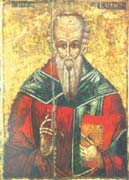 Clement of Alexandria (c. 152-217) |
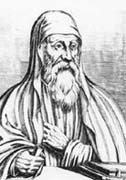 Origen (c. 185-254) |
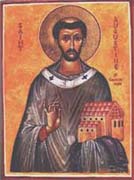 Augustine (c. 354-430) |
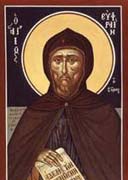 Ephrem the Syrian (c. 306-373) |
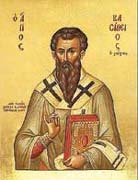 Basil of Caesarea (c. 329-379) |
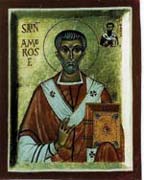 Ambrose of Milan (c. 330-397) |
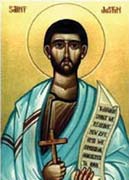 Justin Martyr (c. 100/110-159/165) |
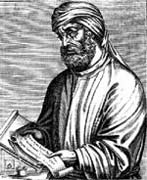 Tartullian (c. 150-225) |
|
Footnotes
- Hugh Ross, A Matter of Days: Resolving a Creation Controversy (Colorado Springs: NavPress, 2004), pp. 45–46.
- See Terry Mortenson’s “Orthodoxy and Genesis: A Review of Genesis, Creation and Early Man” (a book by Fr. Seraphim Rose, published by Saint Heman of Alaska Brotherhood, Platina, California, 2000).
http://www.answersingenesis.org/articles/am/v2/n4/early-church-on-creation